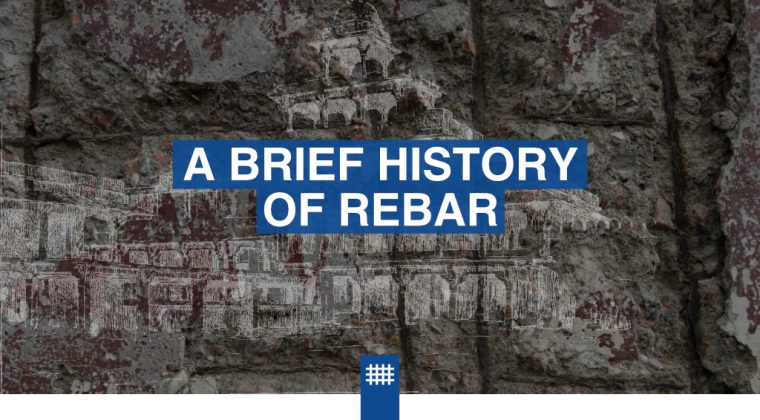Reinforced concrete structures are so intensely intertwined in our society. We all pretty much live in a home that one or another has both concrete and rebar in it. In fact, in one or the other, concrete with supporting bars used to make all sorts of structures or buildings have been part of our existence for much longer than you might think. So, let’s jump into a brief history of rebar.
What is concrete?
Concrete is a mixture that includes cement. Cement is made from lime, marl, and clay. These raw materials are then crushed and mixed together with various minerals. This mix of ingredients is then transported to the kiln where they are heated to temperatures up to 2000℃. Through this process, the ingredients are transformed into small granules known as clinkers. The clinker is ground together with gypsum (calcium sulphate dihydrate – often used in plaster and drywalling) to create a fine gray powder we call cement.
This gray powder is then mixed with aggregates such as gravel or other small stones and sand. When mixed together with water it becomes a concrete paste or batter that you can then pour into place. This can be done where it will stay permanently or in sections and then assembled. Both will need a form to hold the concrete mixture in place while it hardens.
What is Rebar?
Rebar is a reinforcing steel bar that is most often used for concrete construction. The rebar looks like long steel rods with ribs on them for better adhesion with the concrete. They are very long rods that can be bent or cut to the needed size or shape. Standard rebar codes exist for bending called a bending schedule, you can read more about it: What is a bar bending schedule?. Concrete itself has a low tensile strength, meaning that it does not do well with a twisting force. Rebar is placed inside the concrete while it is still wet. The concrete dries and adheres to the rebar. The rebar adds that much-needed tensile strength for a structural sound building. Ultimately reducing any cracks that may occur.
When were concrete and rebar first used together?
The earliest use of concrete structures dates back to 6500 BC by the Nabataea traders. Located in the regions of Syria and Jordan. They created concrete floors, housing structures, and underground cisterns. Later it was used in what we call Egypt and China today, around 3000 BC. But cement and concrete truly took off around 600 BC when the Romans made it easy enough to replicate and pushed its popularity in conquered lands.
As mentioned, cement and concrete have been used in one form or the other for quite some time. The inclusion of supporting rods that were cast iron or wooden were found to be used in the Roman Empire for arches and the like. This continued to the medieval years when iron tie rods and anchor plates were used for arches, cupolas, and vaults. Unfortunately, though, much of the knowledge gained during the Roman Empire concerning concrete was lost. And so it was only in the 19th century that we were able to establish what we know as modern concrete and modern supporting bars made from steel instead of being cast iron. This is when we began putting the steel bars inside the concrete to form a much stronger structure that could go much higher than before.
Over time, the smooth steel rods that were used moved over to a twisted or ribbed steel rod that became what we call rebar. At first, most people ridiculed the idea of a twisted or ribbed bar, Stating that it would make it weaker. But this was found to be the opposite. They offered better adherence to the concrete and ultimately better tensile strength, making for a soundly built structure. It allowed larger bridges and apartment blocks or offices to be built. Taking up more vertical space and less horizontal space meant that cities could expand their populations greatly without acquiring more land.
Concrete and Rebar in Modern Constructions
Today, almost all cities are dominated by rebar and concrete. There are few cities, if any, that do not employ some form of concrete and rebar in their buildings. It has become a global standard by which we build. The notable skyscrapers of the world all stand out as beacons or even monuments to the ingenuity that has come from reinforced concrete construction. From this style of construction, we can learn a lot about where to improve and how it will shape our future.

